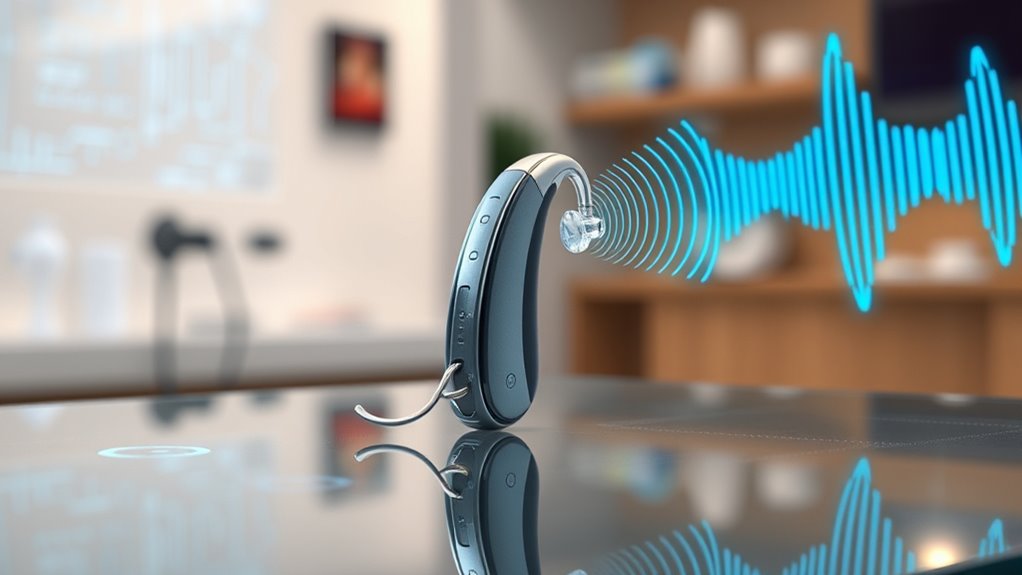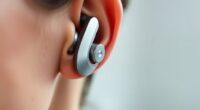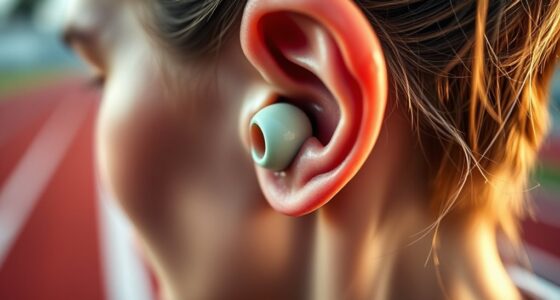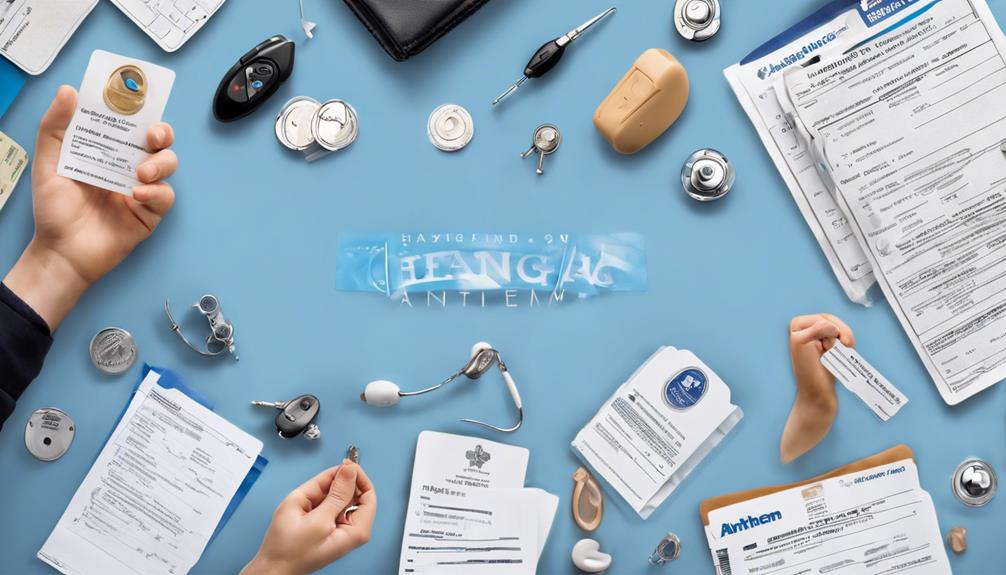Telecoil technology remains highly relevant today, offering you clear sound by directly connecting to looped systems and public listening devices. Unlike Bluetooth, telecoils don’t require pairing or manual adjustments, making them simple and reliable for everyday use. They help you focus in noisy environments and access various public venues easily. As advances keep telecoils discreet and integrated, you’ll find they continue to enhance your hearing experience across many situations. To discover how they can benefit you, stay with us.
Key Takeaways
- Telecoils remain relevant for clear, direct hearing in noisy or crowded environments.
- Many hearing aids still include T-coil features due to their simplicity and cost-effectiveness.
- Advances have integrated telecoils with digital processing, improving usability and discreetness.
- Public loop systems continue to support telecoil use, enhancing accessibility in various venues.
- Telecoils complement modern technology, offering a reliable option alongside Bluetooth and smartphone connectivity.

Have you noticed how telecoil technology is transforming hearing aid experiences? It’s a game-changer when it comes to assistive technology, especially for those who rely on hearing aids in various environments. Telecoils, also known as T-coils, have been a staple in many hearing aid models for decades. They work by picking up magnetic signals from compatible systems like looped public spaces, telephones, and assistive listening devices, providing a clearer, more direct sound. This technology allows you to bypass background noise and focus on speech, which is especially beneficial in crowded or noisy settings. The integration of telecoils into hearing aid models has made it easier for users to navigate complex auditory environments without constantly adjusting their devices.
Despite the rise of digital Bluetooth technology and smartphone connectivity, telecoils remain highly relevant. Many hearing aids still include T-coil options because they are simple, reliable, and cost-effective. They don’t require pairing or manual adjustments, making them a convenient assistive technology for everyday use. Plus, in many public places, looped systems are common, and hearing aid models equipped with telecoils can seamlessly connect to them. This makes attending events, shopping, or visiting public venues much less stressful and more accessible. As a result, telecoils continue to serve as an essential feature for many hearing aid users, especially those who prefer a straightforward, no-fuss solution.
Moreover, the ongoing development of hearing aid models means telecoil technology is evolving alongside other features. Modern hearing aids often combine telecoil functionality with digital processing, allowing you to switch easily between different listening modes. Manufacturers are also making telecoil-enabled devices smaller and more discreet, ensuring they don’t compromise on aesthetics or comfort. These advances demonstrate that telecoils are not just a relic of older hearing aid technology but an adaptable and valuable component of current models. For those who attend many public events or work in noisy environments, the combination of assistive technology and advanced hearing aid models makes a significant difference. Additionally, the integration of lifestyle considerations into hearing aid design ensures these devices meet users’ everyday needs more effectively.
Frequently Asked Questions
How Do Telecoils Compare to Bluetooth Technology in Hearing Aids?
When comparing telecoils to Bluetooth technology in hearing aids, you find that telecoils offer reliable wireless integration with loop systems, providing clear sound quality in specific settings like theaters or churches. Bluetooth, however, delivers versatile wireless connectivity to smartphones and other devices, offering superior sound quality for streaming audio directly. While telecoils excel in public spaces, Bluetooth provides broader usability, making both options valuable depending on your listening environment.
Are Telecoils Compatible With All Modern Hearing Aid Models?
Like a modern-day Icarus, you might wonder if telecoils soar with all hearing aid models today. While many newer devices prioritize wireless compatibility and seamless device integration, telecoils aren’t universally compatible. Some advanced hearing aids omit telecoil options to favor Bluetooth and digital features. Before choosing, check your hearing aid’s specifications to confirm it supports telecoil functionality, especially if you rely on it for clear, direct audio access.
What Are the Costs Involved in Upgrading to Telecoil-Enabled Devices?
When considering upgrading to telecoil-enabled devices, you’ll want to do a thorough cost analysis, including installation expenses. The costs vary depending on your hearing aid model and provider, but expect to pay for new devices or accessories, plus professional installation if needed. While initial expenses can seem high, many find the improved sound quality and accessibility worth the investment, especially if you frequently use public telecoil-compatible systems.
How Do Telecoils Perform in Noisy Environments?
In noisy environments, telecoils excel at reducing background noise and enhancing signal clarity. You’ll notice a significant improvement in hearing clarity because telecoils pick up sound directly from the source, bypassing ambient noise. This focused transmission helps you understand speech better, even in crowded or loud settings. Overall, telecoils are highly effective for improving listening experiences when background noise is a concern, making conversations clearer and more manageable.
Are Telecoils Suitable for Use With Smartphones and Other Devices?
Think of telecoils as the bridge connecting you to sound, much like a reliable subway route. When it comes to smartphones and devices, telecoils offer excellent wireless compatibility and seamless device integration, allowing you to switch effortlessly between audio sources. While some newer tech may favor Bluetooth, telecoils still provide a dedicated, clear connection, making them a practical choice for those seeking consistent sound quality in various settings.
Conclusion
Telecoils are still relevant, still valuable, and still important. They connect you to clearer sound, to better conversations, and to enhanced independence. As technology evolves, so do telecoils, adapting to new devices, new needs, and new possibilities. By embracing their ongoing relevance, you guarantee better hearing, better communication, and a better quality of life. Stay informed, stay connected, and let telecoils keep you hearing what truly matters.











